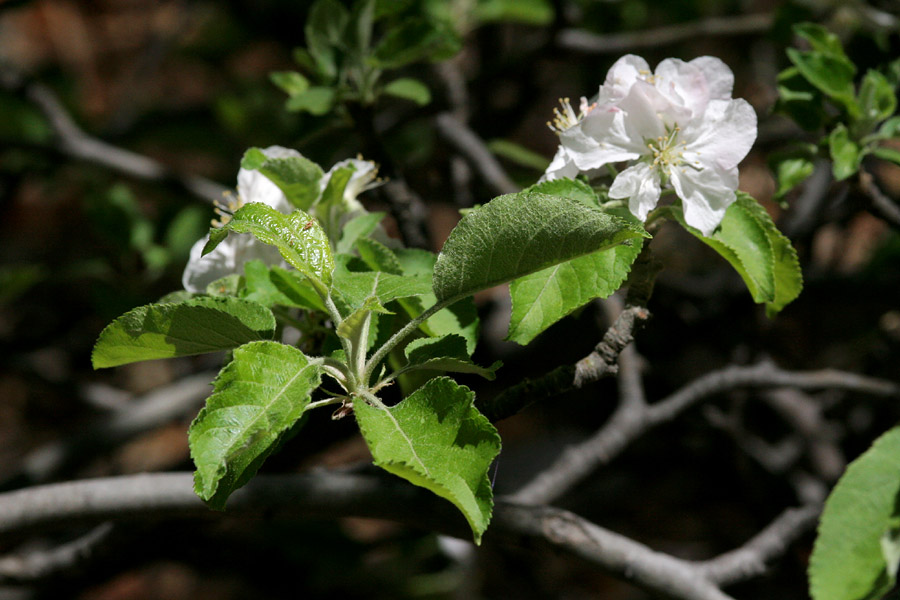
|
Family: Rosaceae |
Small tree or shrub often 4.5 - 7.5 m tall Leaves: with stalks and stipules, toothed or lobed, usually hairy, folded or rolled up longitudinally in bud. Flowers: bisexual, borne in an inflorescence, with fifteen to 50 stamens, usually yellow anthers, two to five styles fused at the base, and an inferior and three- to five-celled ovary. Sepals: five, fused at the base, sometimes persistent. Petals: white to pink or red, nearly circular to inversely egg-shaped. Fruit: fleshy with a core (pome), red to yellow or green. Bark: becoming shiny grayish brown and scaly with age. Buds: usually reddish brown, egg-shaped with overlapping scales, often with hairs sticking out from the inner surface of the scales. Form: low and mound-like to wide-spreading, sometimes columnar to weeping in cultivars, highly branched, rarely somewhat spiny. Flowering: spring Habitat and ecology: Woods and thickets. Some Malus species are native, while others are introduced and sometimes escape into natural areas. Notes: Malus is a challenging genus taxonomically and is sometimes included in the genus Pyrus. Dirr (1998) states a fruit less than 5 cm (2 inches) in diameter is called a crabapple, while a fruit larger than 5 cm is called an apple. See Dirr (1998) for information on the hundreds of Malus cultivars available for landscape use. Etymology: Malus is the classic name for apple. Author: The Morton Arboretum |
This project was made possible in part by the Institute of Museum and Library Services [MG-70-19-0057-19].
Powered by Symbiota



